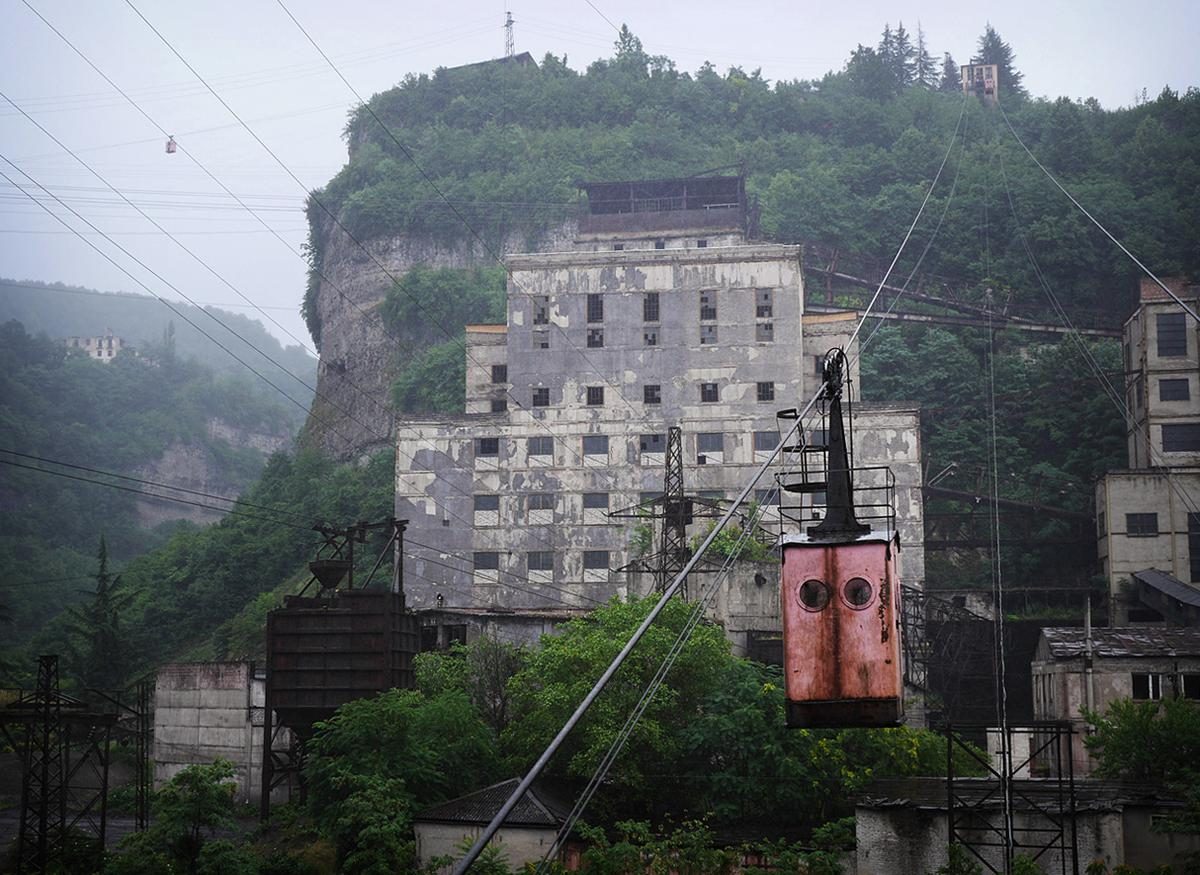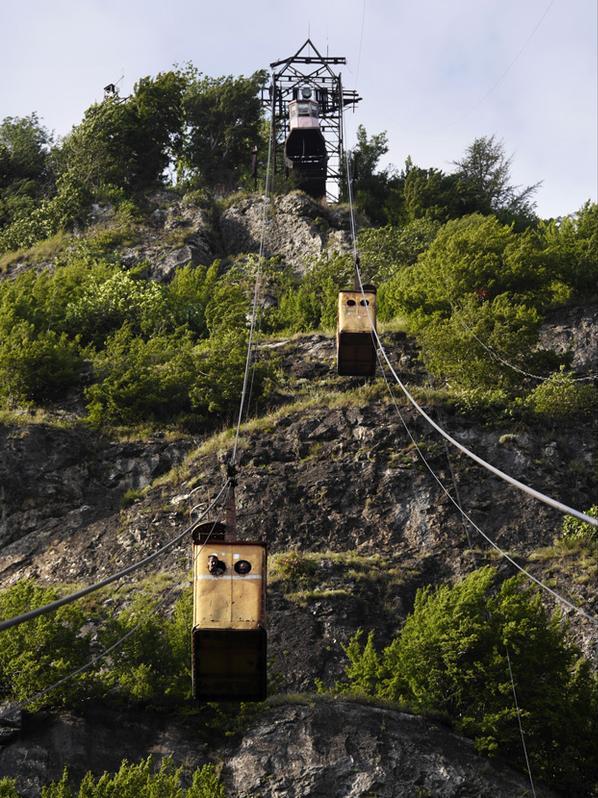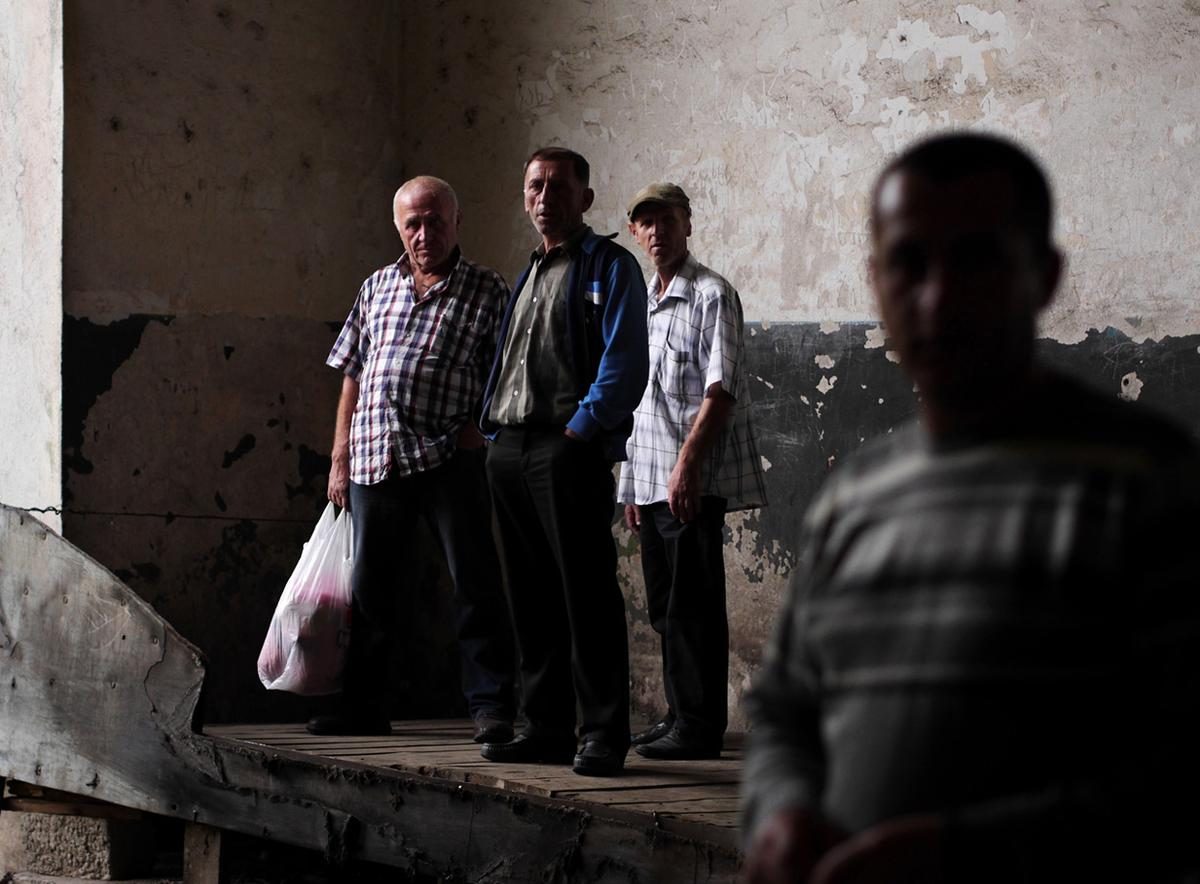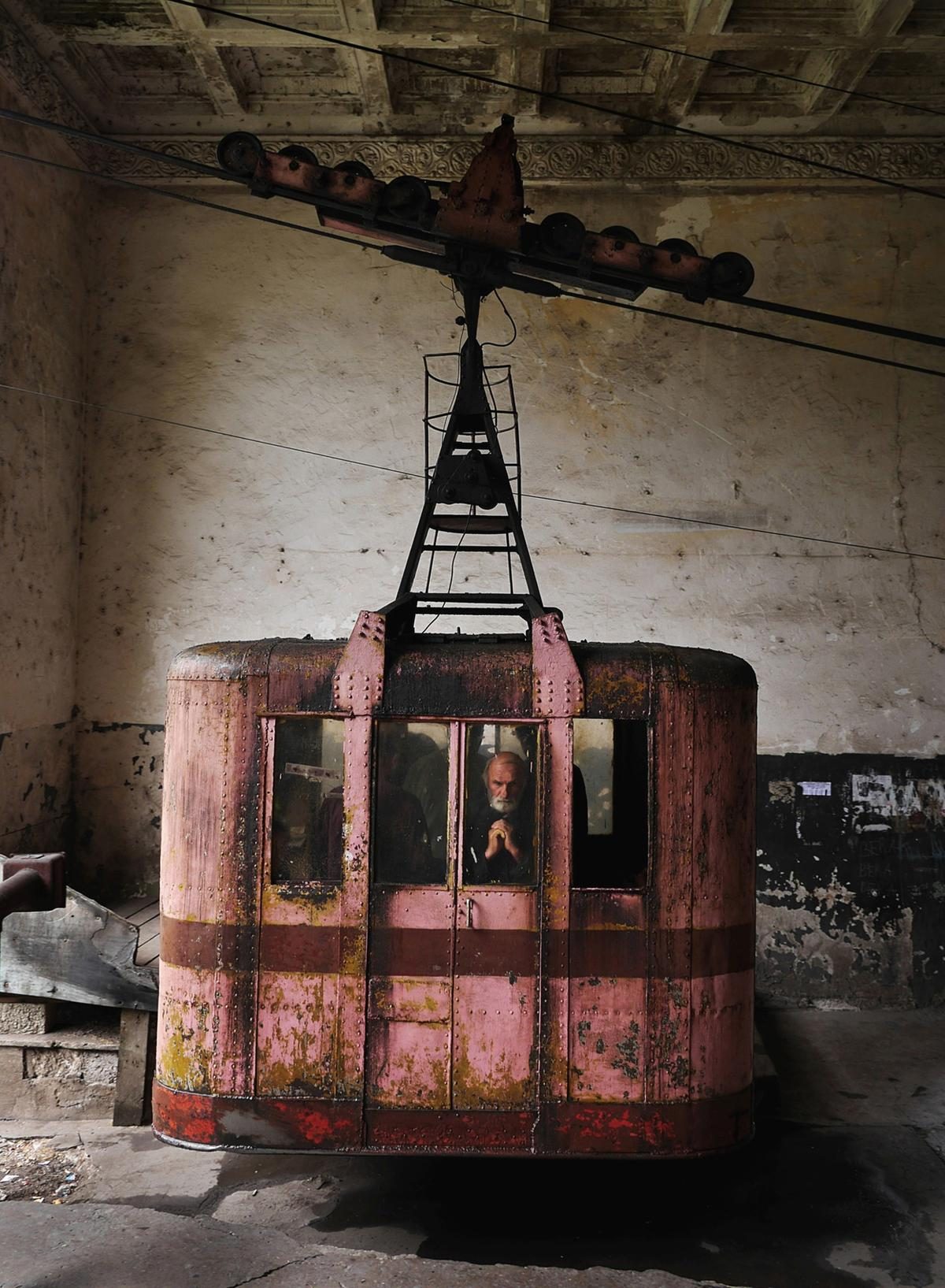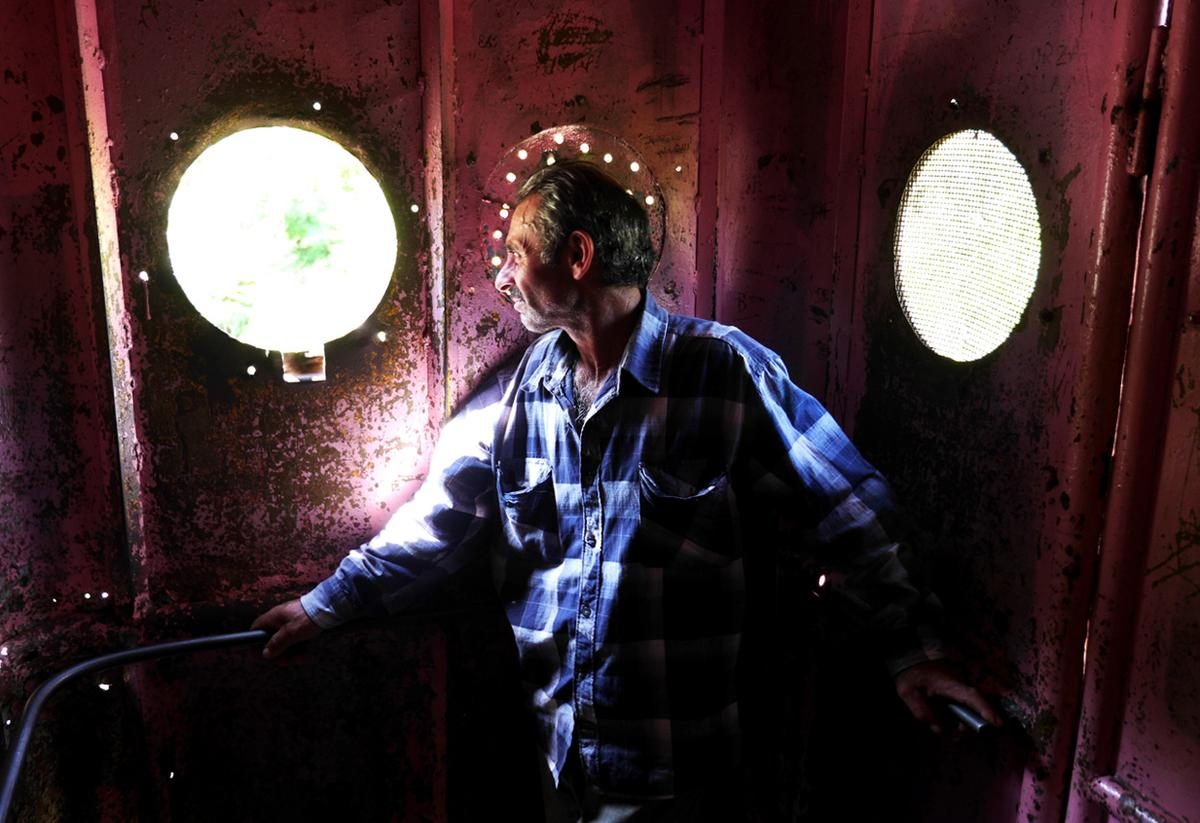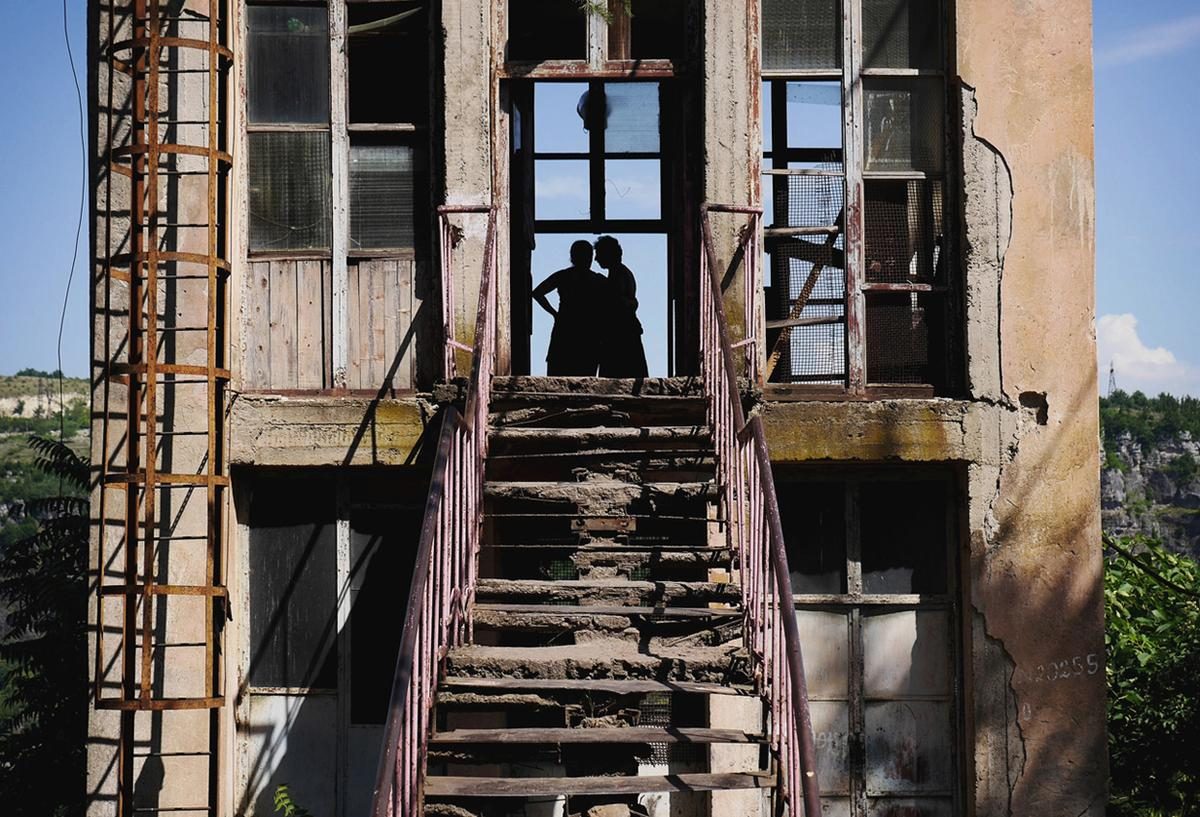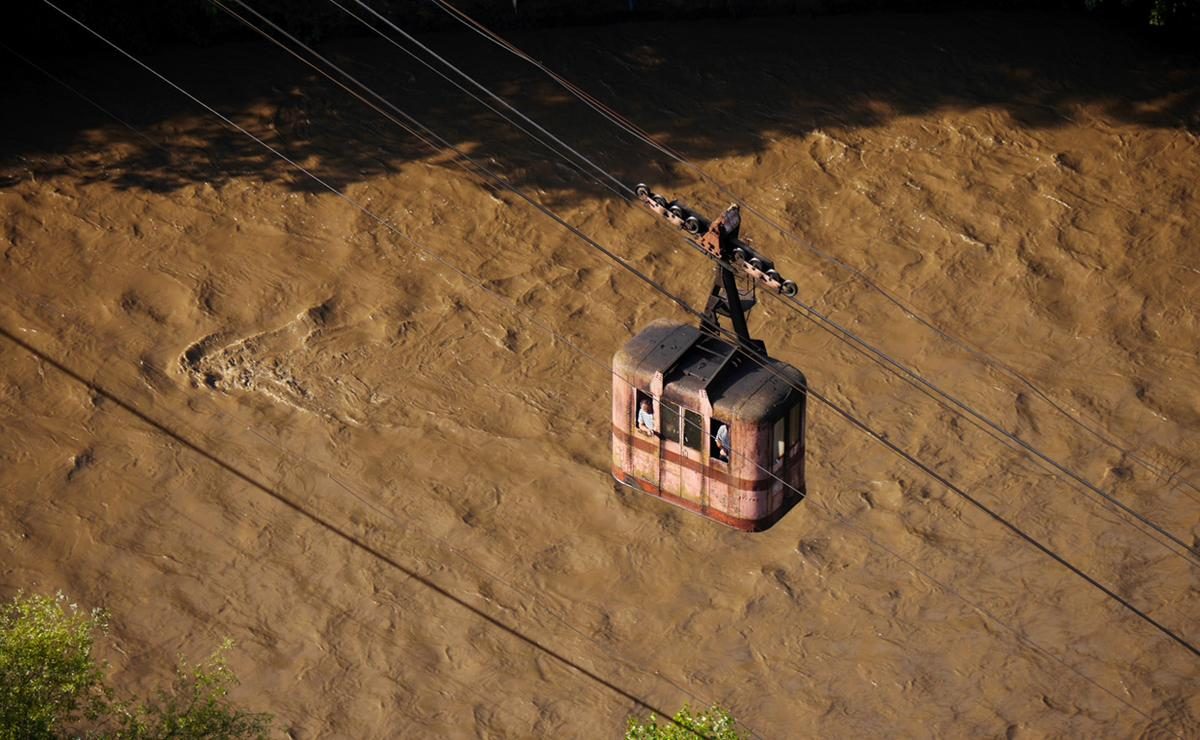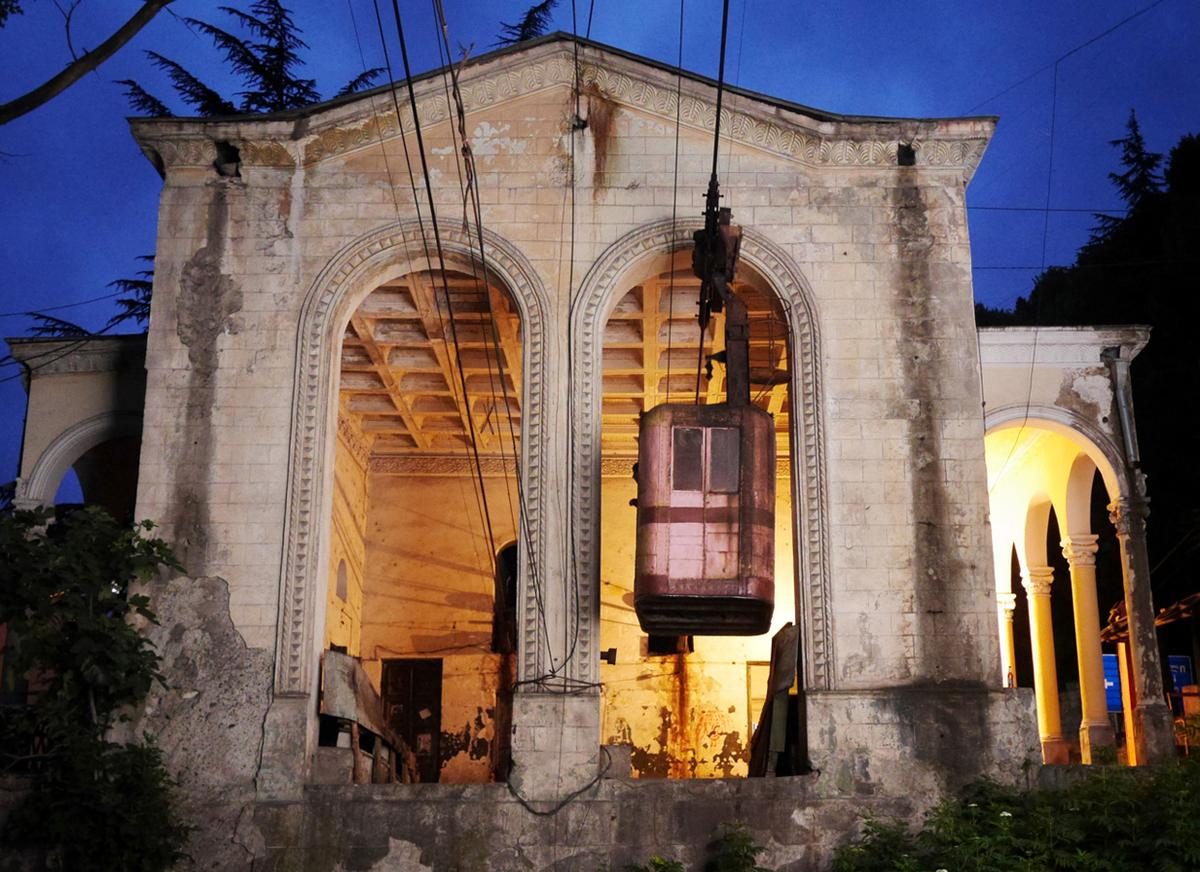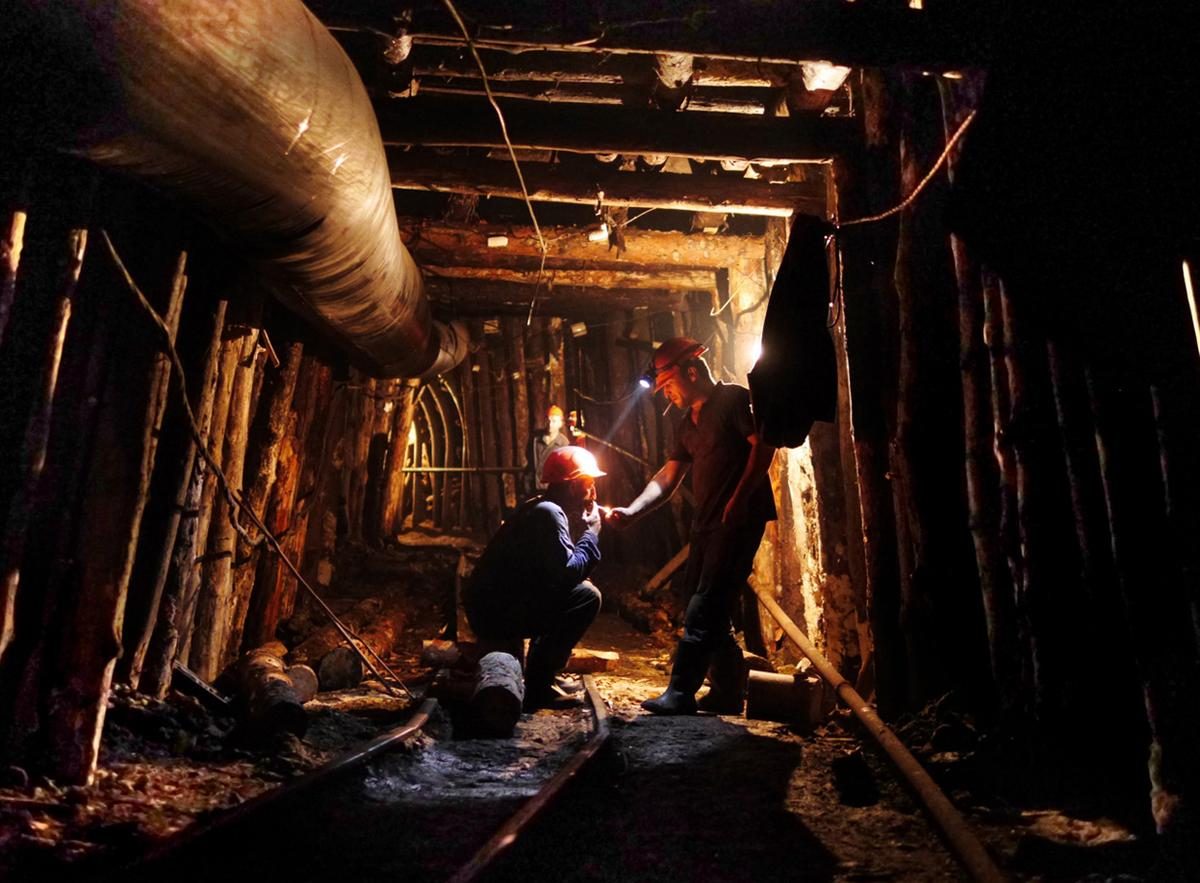The tramway above the steep valley mining town of Chiatura, Georgia, is a public transport system not for the feint-hearted. Chiatura is criss-crossed by the “Kanatnaya Doroga” (“rope road”), a network of Soviet-era aerial tramways. It’s still in use. In the early 20th century, after the Soviet Union seized control of leader Joseph Stalin’s native Georgia, the authorities constructed a workers’ town to mine Chiatura’s vast manganese deposits. Tramway 25 was the first passenger tramway in the USSR and has run almost continuously since its first journey in 1954.

A heavily greased pulley wheel turns on the Peace tramway. Most tramways in Chiatura use a ‘jig back’ system where two cabins are connected to the same haulage rope. An electric motor pulls one cabin down, using that cabin’s weight to help pull the other cabin up.
The cabins run without a braking system. If the haulage ropes snap, the cabins will roll straight back down the track cable. An event like this happened on a tramway in Georgia’s capital Tbilisi in 1990.

An operator of Tramway 25 pits cherries in the downtime between passengers. Operators usually wait until there are 3-4 passengers waiting at both stations before ringing the bell and commencing a trip.
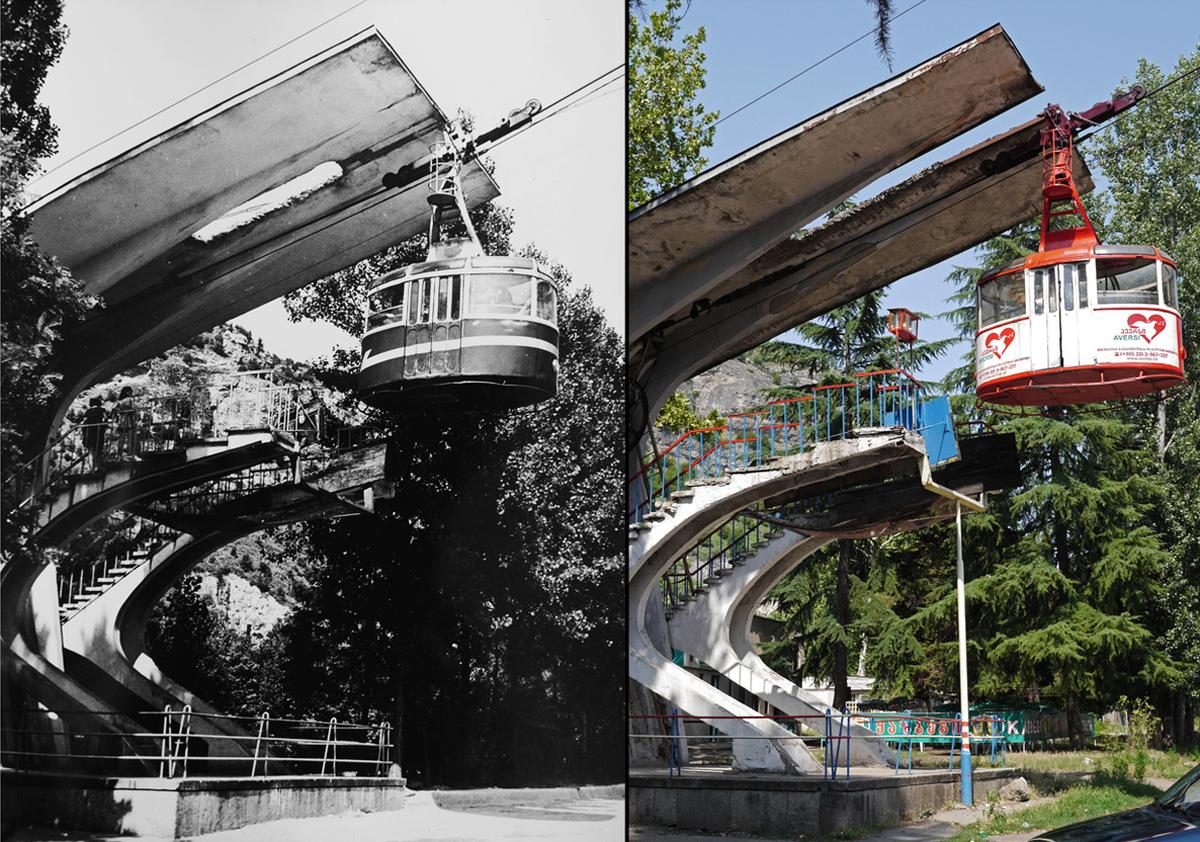
Photos of a tramway in 1960 (L) and today (Photo courtesy Georgian Manganese Holdings). In 2008 the hauling rope of this tramway snapped with 12 passengers inside. Ramaz Khipshidze, the director of the Aerial Tramway Network, says the automatic braking system worked, but Chiatura didn’t have the equipment needed to rescue the people inside. For 12 hours the passengers dangled above the town until a team from Tbilisi arrived with a rescue cabin. Although unwilling to specify amounts, Mr. Khipshidze says the passengers were paid compensation, and some accepted the company’s offer of counseling.
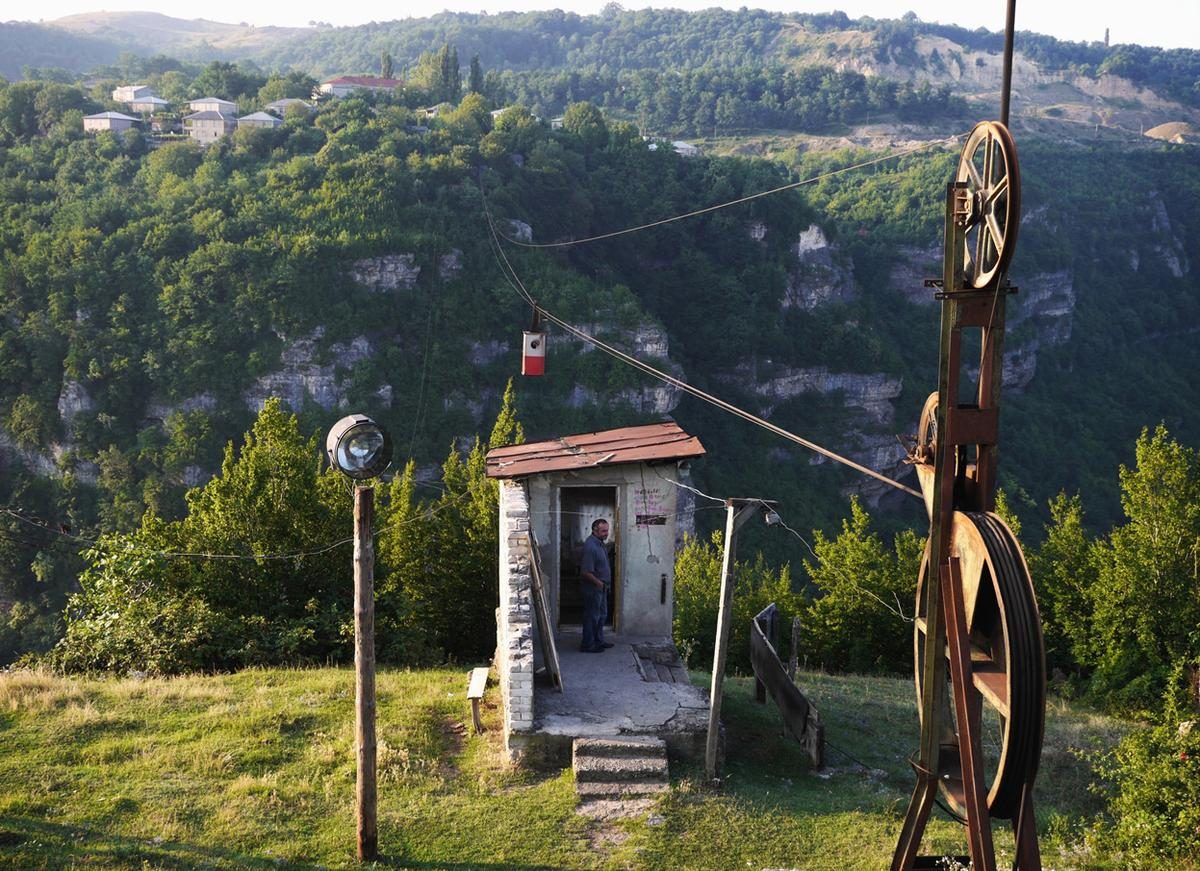
A man waits for a ride over a gorge on the eastern edge of Chiatura. This tramway runs 150 metres (492 feet) above the valley floor. Locals take this across to another tramway (just visible – upper right) which lowers them down to a bus stop on the main road below.
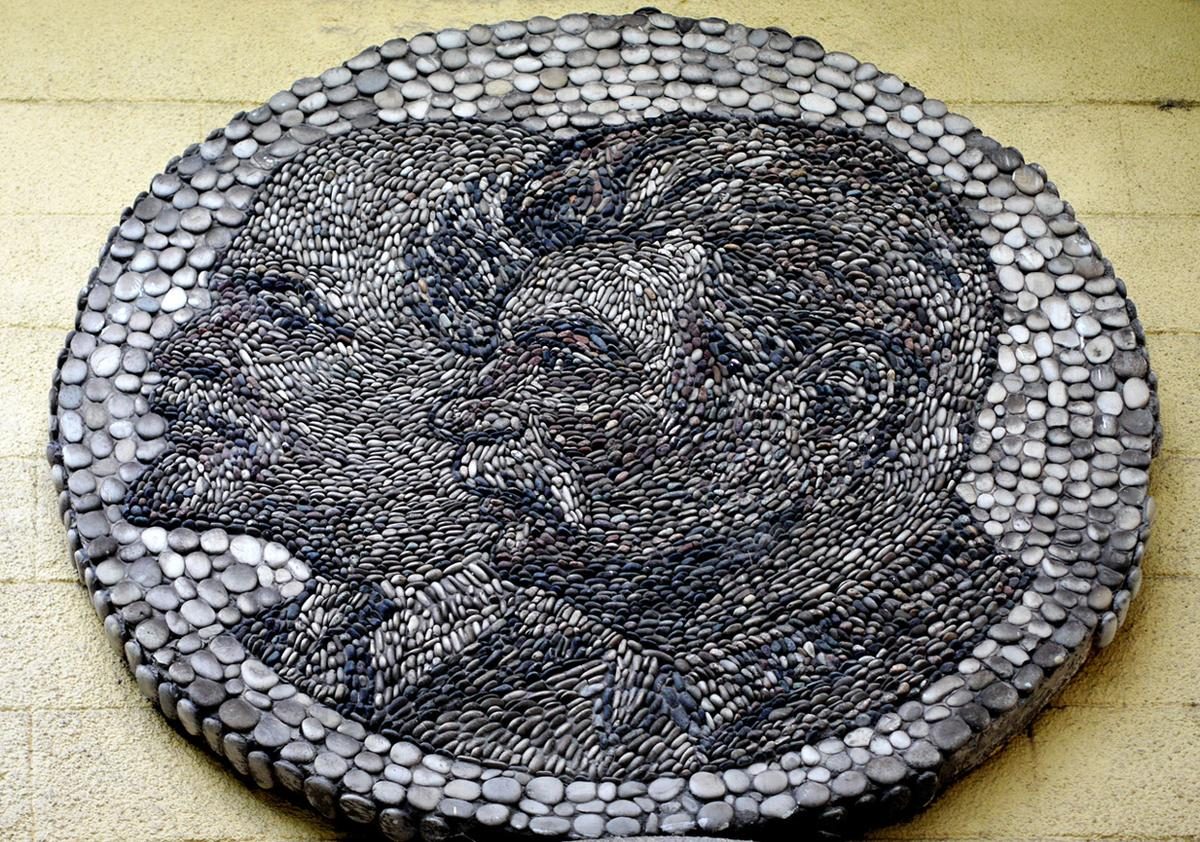
Mosaic of Lenin and Stalin at the entrance to Chiatura’s main aerial tramway station. The mosaic is made of river pebbles. Stalin’s relationship with Chiatura dates to his days as a revolutionary fugitive hiding out in the mines above the town. In the chaos that followed the 1905 Russian revolution a young Stalin formed a band of revolutionaries in Chiatura.

A photo of tramway 25 dating from the 1950s (L) alongside a current picture (Photo courtesy Georgian Manganese Holdings)
Would you like to support Flashbak?
Please consider making a donation to our site. We don't want to rely on ads to bring you the best of visual culture. You can also support us by signing up to our Mailing List. And you can also follow us on Facebook, Instagram and Twitter. For great art and culture delivered to your door, visit our shop.
